Discover 11 hidden attractions, cool sights, and unusual things to do in New Canaan (United States). Don't miss out on these must-see attractions: Glass House, Waveny Park, and New Canaan Nature Center. Also, be sure to include John Rogers Studio in your itinerary.
Below, you can find the list of the most amazing places you should visit in New Canaan (Connecticut).
Table of Contents
Glass House
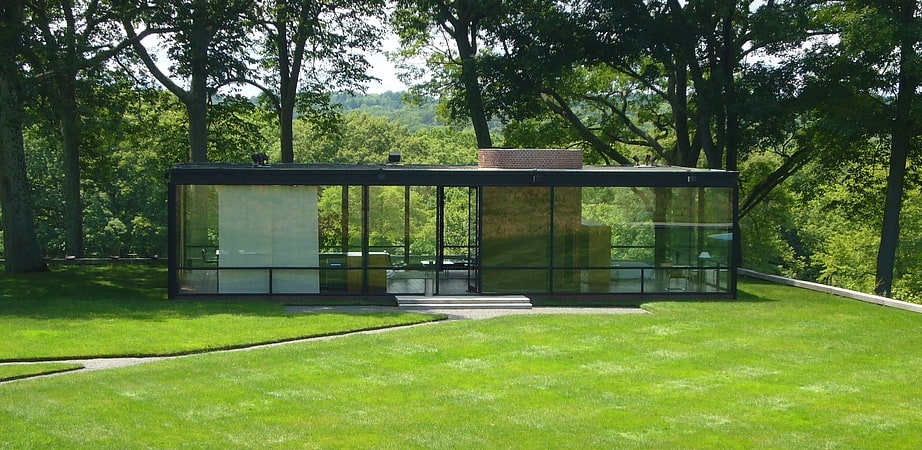
Museum in New Canaan, Connecticut. The Glass House, or Johnson house, is a historic house museum on Ponus Ridge Road in New Canaan, Connecticut built in 1948–49. It was designed by architect Philip Johnson as his own residence. It has been called his "signature work".
The Glass House has been "universally viewed as having been derived from" the Farnsworth House in Plano, Illinois by Ludwig Mies van der Rohe according to Alice T. Friedman, though the Farnsworth House was not completed until 1951, two years after the Glass House. Johnson curated an exhibit of Mies van der Rohe work at the Museum of Modern Art in 1947, featuring a model of the glass Farnsworth House. It was an important and influential project for Johnson and for modern architecture. The building is an example of minimal structure, geometry, proportion, and the effects of transparency and reflection. The estate includes other buildings designed by Johnson that span his career. It was designated a National Historic Landmark in 1997. It is now owned by the National Trust for Historic Preservation and is open to the public for guided tours, which begin at a visitors center at 199 Elm Street in New Canaan.
The house is an example of early use of industrial materials in home design, such as glass and steel. Johnson lived at the weekend retreat for 58 years; 45 years with his long time companion David Whitney, an art critic and curator who helped design the landscaping and largely collected the art displayed there.[1]
Address: 842 Ponus Ridge Rd, 06840-3416 New Canaan
Waveny Park

Park in New Canaan, Connecticut. Waveny Park is a park in New Canaan, Connecticut. The park's centerpiece is "the castle" built in 1912 and surrounded by 300 acres of fields, ponds and trails. The architect for the structure was William Tubby. Landscape design for the original residence was by landscape architect Frederick Law Olmsted, Jr. The property was listed on the National Register of Historic Places in 2019.
The house was used for exterior shots for the fictional 'Cortlandt Manor' on the soap opera All My Children for many years; exteriors of the estate were also used in the 2004 remake film The Stepford Wives.
The park is bordered by Farm Road to the North, the Merritt Parkway to the South, South Avenue to the East and Lapham Road to the West. Over the years, numerous additional town structures have been built on parts of the property including New Canaan High School, Waveny LifeCare Network, an aquatic center, two public water supply towers, as well as paddle tennis courts. To be able to use some of these facilities, a nominal annual fee is charged. The Parks recreations are enjoyed by many people from all around Fairfield County.
Lewis Lapham, one of the founders of Texaco and the man who built Waveny House, spent summers there with his family for many years. The Lapham family gave the Town of New Canaan most of the estate land in 1967 and sold Waveny House and its surrounding 300 acres (1.2 km2) to the Town for $1,500,000.
Actor Christopher Lloyd (Back to the Future, The Addams Family), born in Stamford, CT, lived in the Waveny mansion.[2]
Address: South Avenue, New Canaan
New Canaan Nature Center

Non-profit organization in New Canaan, Connecticut. The New Canaan Nature Center is a botanical garden, arboretum and nature preserve located at 144 Oenoke Ridge, Route 124, about.25 miles north of the center of New Canaan, Connecticut.
The nature center includes wet and dry meadows, two ponds, wet and dry woodlands, dense thickets, an old orchard, and a cattail marsh, as well as a 4,000-square-foot (370 m2) greenhouse. Landscaped areas of the site include a wildflower garden (which won the 1997 Homer Lucas Landscape Award from the New England Wild Flower Society), a herb garden and a perennial border. About 90% of the plant specimens in the wildflower garden are native species, including bloodroot, columbine, mayapple, jack-in-the-pulpit, wild geranium, Solomon's plume, starflower, and trillium. Shade-loving perennials include bleeding heart, crested iris, Jacob's ladder, hepatica, European ginger and Virginia bluebells. Azaleas, rhododendrons and a stand of mountain laurel also feature.
The center also contains a small arboretum of Sciadopitys verticillata (Umbrella Pine), Chamaecyparis pisifera Squarrosa (Moss Sawara Cypress), Chamaecyparis pisifera Plumosa (Plume False Cyprus), Pinus densiflora ‘Umbraculifera’ (Japanese Umbrella Pine), Fagus sylvatica ‘Atropunicea’ (Purple Beech), Fagus sylvatica ‘Pendula’ (European Weeping Beech), Cercis canandensis (Eastern Redbud), Acer palmatum ‘Dissectum-Pendula’, Pinus cembra (Swiss Stone Pine) and Picea apies ‘Repens’ (Weeping Norway Spruce).
New Canaan Nature Center features many nature programs throughout the year, including the Fall Fair every October, and maple sugaring celebrations in early spring.[3]
Address: 144 Oenoke Rdg, 06840-4198 New Canaan
John Rogers Studio
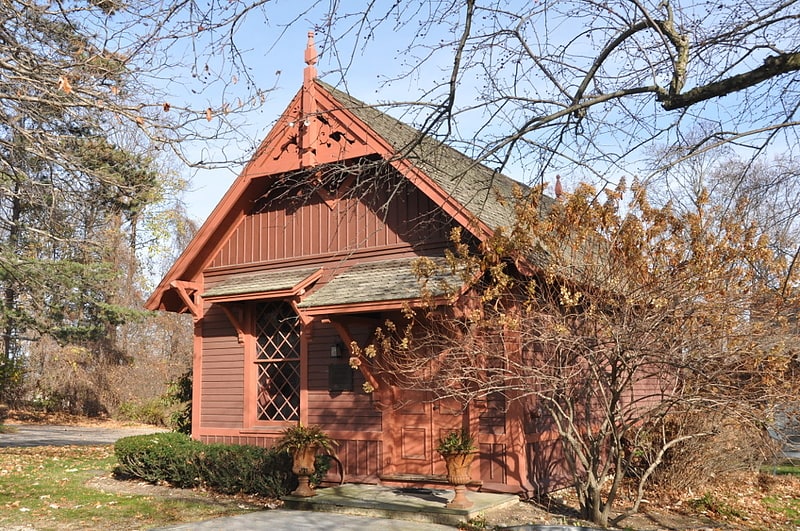
Museum in New Canaan, Connecticut. The John Rogers Studio and Museum is the preserved studio of sculptor John Rogers, a popular American artist called "the people's sculptor" in the latter 19th century. It is located at 13 Oenoke Ridge in New Canaan, Connecticut, on the grounds of the New Canaan Historical Society, which opens it to the public. The studio houses a collection of "Rogers Groups"—plaster statuettes often depicting two or more people. The display area has been reconfigured to reflect the feeling of the artist's studio.
Rogers Groups often depicted people interacting with each other in a sentimental scene. According to the National Historic Landmarks Program of the National Park Service, the museum's collection is "one of the finest collections of Rogers groups in the nation".
The studio is a Gothic-Victorian gable-roofed building built in 1878. John Rogers's popularity stemmed from the way his statuary groups created scenes of everyday life with a sentimental feel that has been compared to the much later Norman Rockwell. Instead of working in bronze and marble, he sculpted in more affordable plaster, painted the color of putty to hide dust.
Rogers was prolific as well of popular. During his 33-year career he produced almost 80,000 plaster copies of his 86 "Rogers Groups." His statuettes decorated Victorian parlors throughout the United States.
Sculpture on display includes "The Traveling Magician", showing a magician pulling a rabbit out of a hat for two children, and "The Neighboring Pews", depicting a moment among people in church. "Union Refugees" depicts a scene from the Civil War.
The studio was declared a National Historic Landmark in 1965. In 2003, a $95,000 matching grant under the Save America's Treasures program included financing for a climate-control and air-filtration system to ensure long-term preservation of both the building and the collection.[4]
New Canaan Historical Society
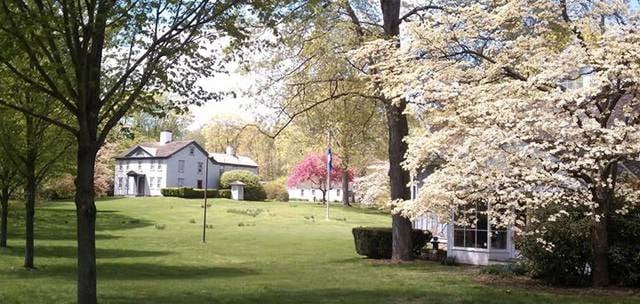
Museum, History museum
Address: 13 Oenoke Ridge, 06840-4104 New Canaan
Grace Farms
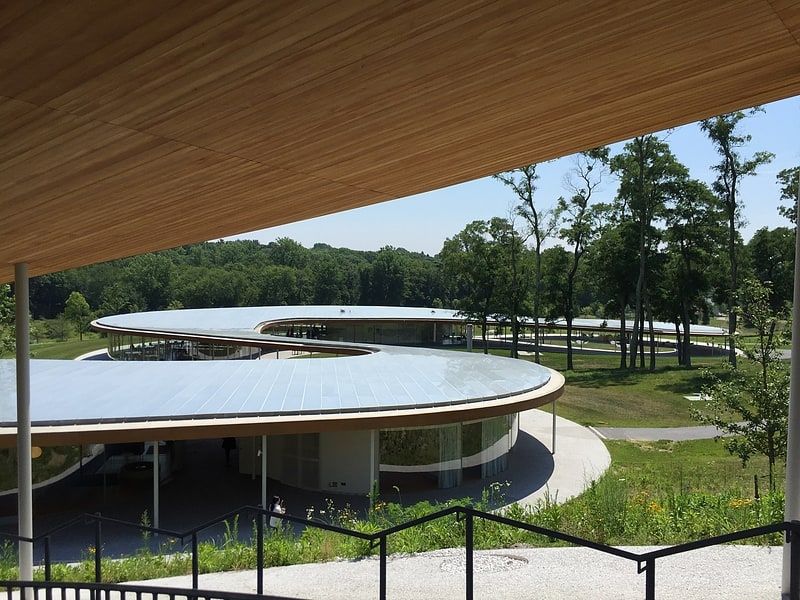
Non-profit organization in New Canaan, Connecticut. Grace Farms is an 80-acre public space in New Canaan, Connecticut. Grace Farms is owned and operated by Grace Farms Foundation, which supports initiatives in the areas of nature, arts, justice, community, and faith, and encourages participation locally and globally.
Grace Farms Foundation set out to create a building nestled into the existing habitat that would enable visitors to experience nature, encounter the arts, pursue justice, foster community, and explore faith. The River building, designed by the Pritzker Prize-winning, Japanese architecture firm SANAA, is a part of the landscape without drawing attention to itself. Under the continuous roof are five transparent glass-enclosed volumes that can host a variety of activities and events, while maintaining a constant sense of the surrounding environment. The areas of the River building are: the Sanctuary, a 700-seat amphitheater; the library, a staffed library with resources related Grace Farms Foundation's initiatives; the Commons, a community gathering space with 18-foot-long tables; the Pavilion; a welcome reception and conversation space with tea service; and the Court, a partially below-grade recreational and performance space. Approximately 77 of Grace Farms' 80 acres are currently managed as open meadows, woods, wetlands, and ponds.
The site is open to the public six days a week.
Permanent contemporary art installations by Thomas Demand, Olafur Eliasson, Teresita Fernández, Beatriz Milhazes, and Susan Philipsz are located around Grace Farms.[5]
Address: 365 Lukes Wood Rd, New Canaan
St. Mark's Episcopal Church
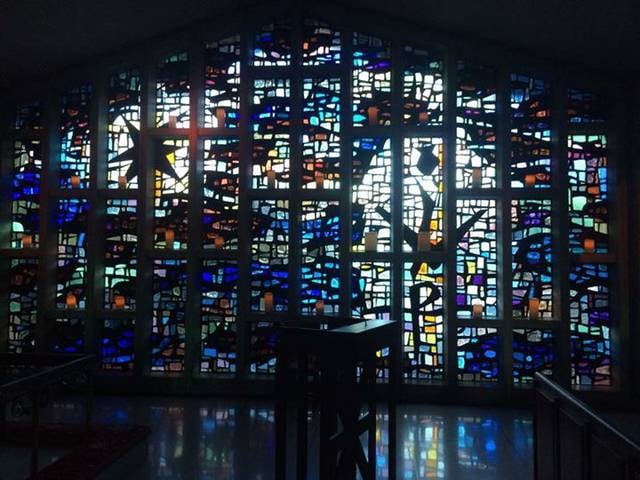
Architecture, Sacred and religious sites, Fountain, Church
Address: 111 Oenoke Ridge, 06840 New Canaan
Marcel Breuer House II

The Marcel Breuer House II, also known as the New Canaan Breuer House I, is a historic house at 122 Sunset Hill Road in New Canaan, Connecticut. Built in 1947, it was designed by architect Marcel Breuer as a home for his family. It is an important early example of his Modern Movement designs, with a cantilevered design featuring glass and stone finishes. The house, occupied by his family for just four years, was listed on the National Register of Historic Places in 2010.[6]
Arthur and Lyn Chivvis House
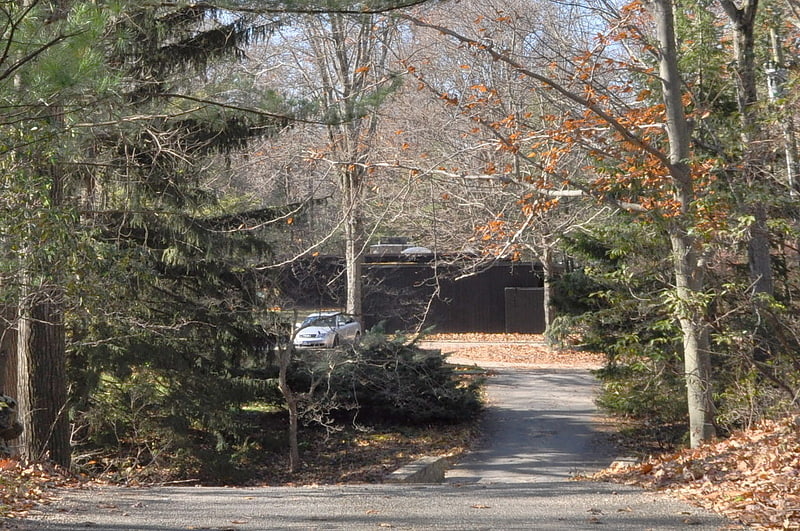
The Arthur and Lyn Chivvis House is a historic house at 2 Wydendown Road in New Canaan, Connecticut. Built in 1977-78, it was designed by architect Eliot Noyes for a family friend, and was his last residential commission. Its Modern Movement design is based in part of the architect's own residence in New Canaan. The house was listed on the National Register of Historic Places in 2010.[7]
Abijah Comstock House
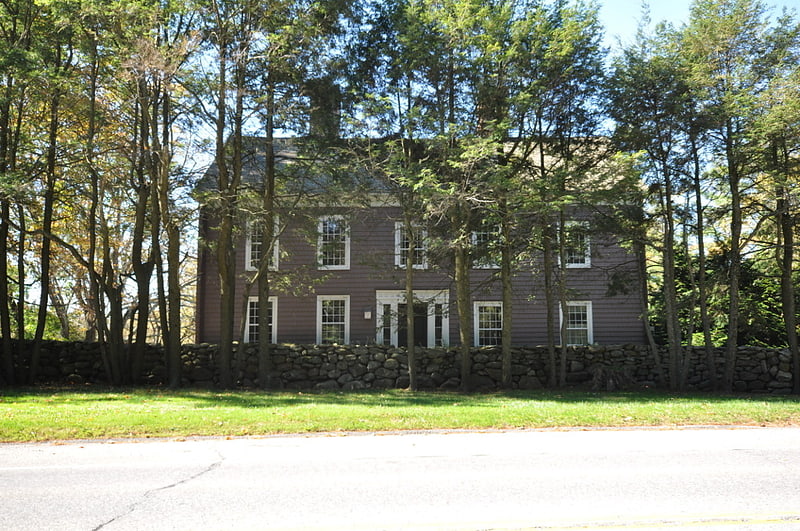
The Abijah Comstock House is a historic house at 1328 Smith Ridge Road in New Canaan, Connecticut, United States. Built about 1779 and enlarged about 1810, it is a good example of high-style Federal period architecture. It is also significant for its documented history as the home of a slave owner. The house was listed on the National Register of Historic Places in 2017.[8]
New Canaan Town Hall
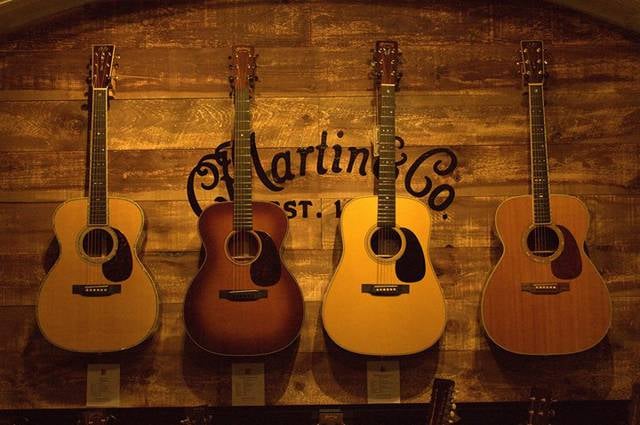
City hall
Address: 15 Forest Street, New Canaan